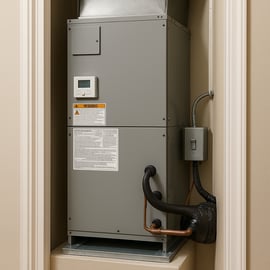Yes, home inspectors thoroughly examine the heating, ventilation, and air conditioning system to ensure it is functioning correctly, operating efficiently, and to identify any potential issues that could lead to future problems. This includes a visual inspection of the ductwork for damage and proper installation, evaluating the condition of the furnace/heat and air conditioning units, and ensuring that all components are in compliance with safety standards. They also assess the system's age and physical exterior condition.
Additionally, inspectors conduct a procedure known as a differential. They utilize a laser thermometer or an HVAC probe to measure the temperature of the air entering the unit (return air) and the air exiting the air handler. The difference between these temperature readings indicates the efficiency of the HVAC system. Ideally, this difference should be 16 degrees or more.
Finally, inspectors examine what are referred to as coils. These are typicay V-shaped components where the air initially enters the air handler before being cooled. The coils should appear as shiny steel and be free of debris or mold. However, not all coils are visible or accessible, such as those in gas-fed air handler units. In these cases, the coils are enclosed at the top of the unit, with the drum (motor) located at the bottom.


AC Compressor and Air Handler